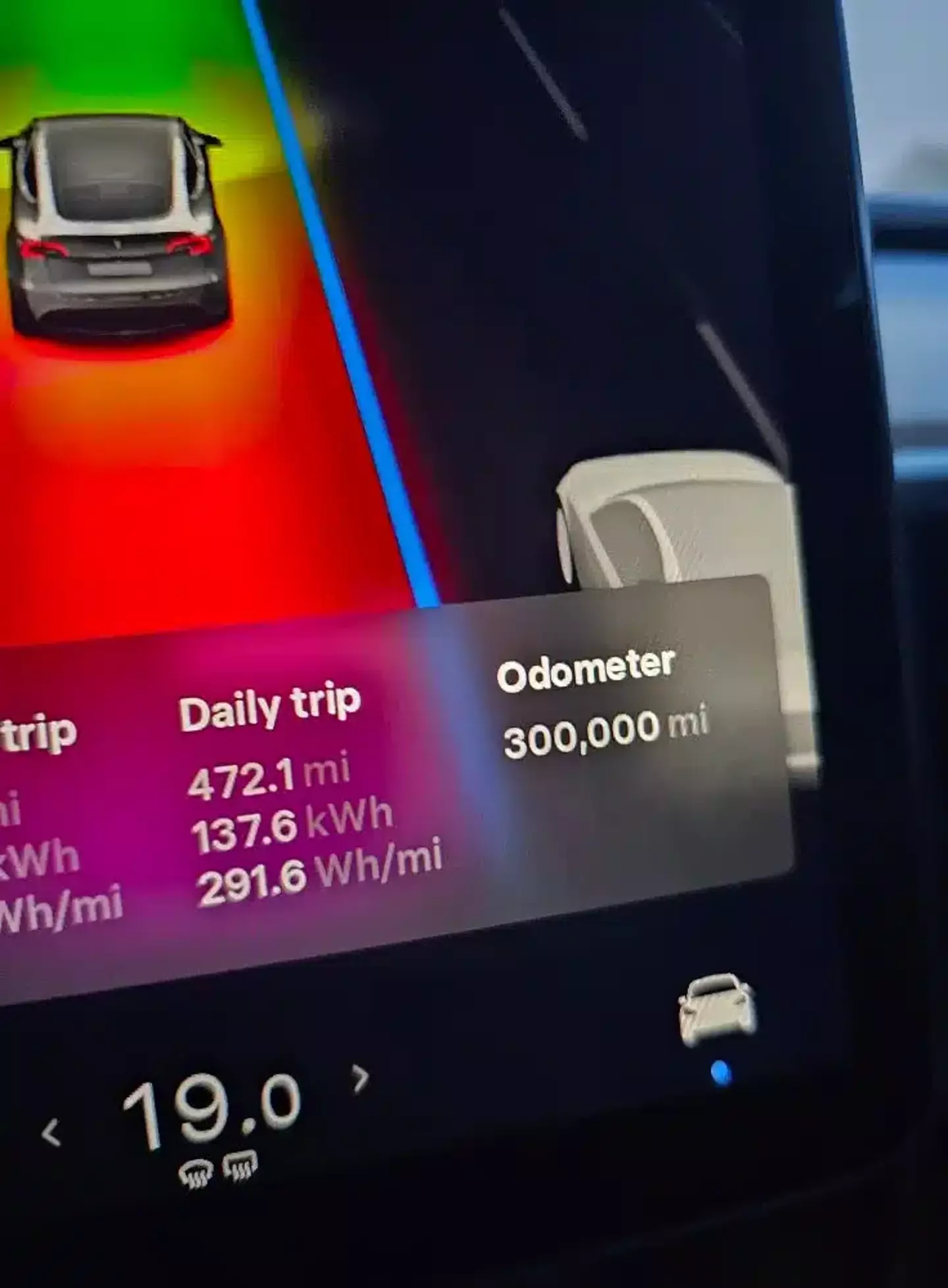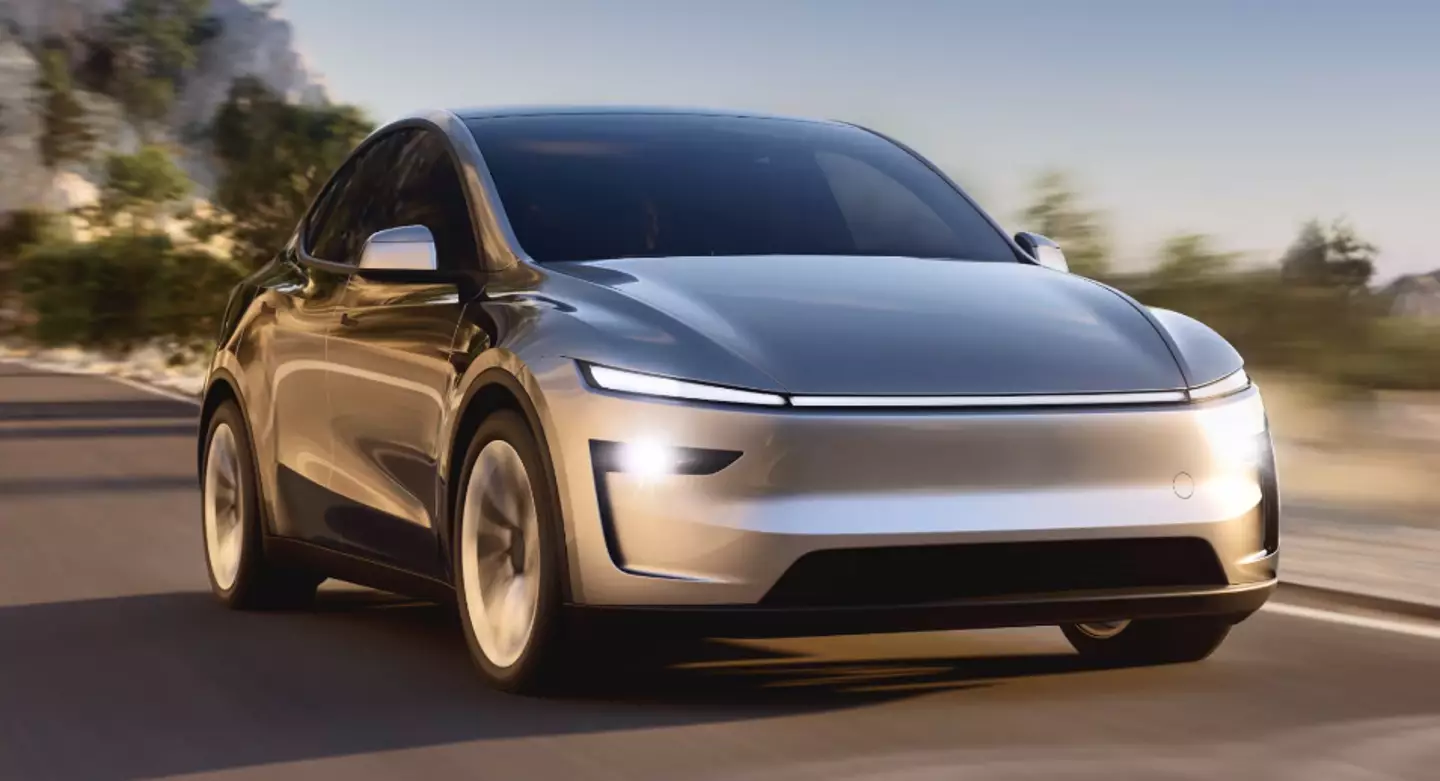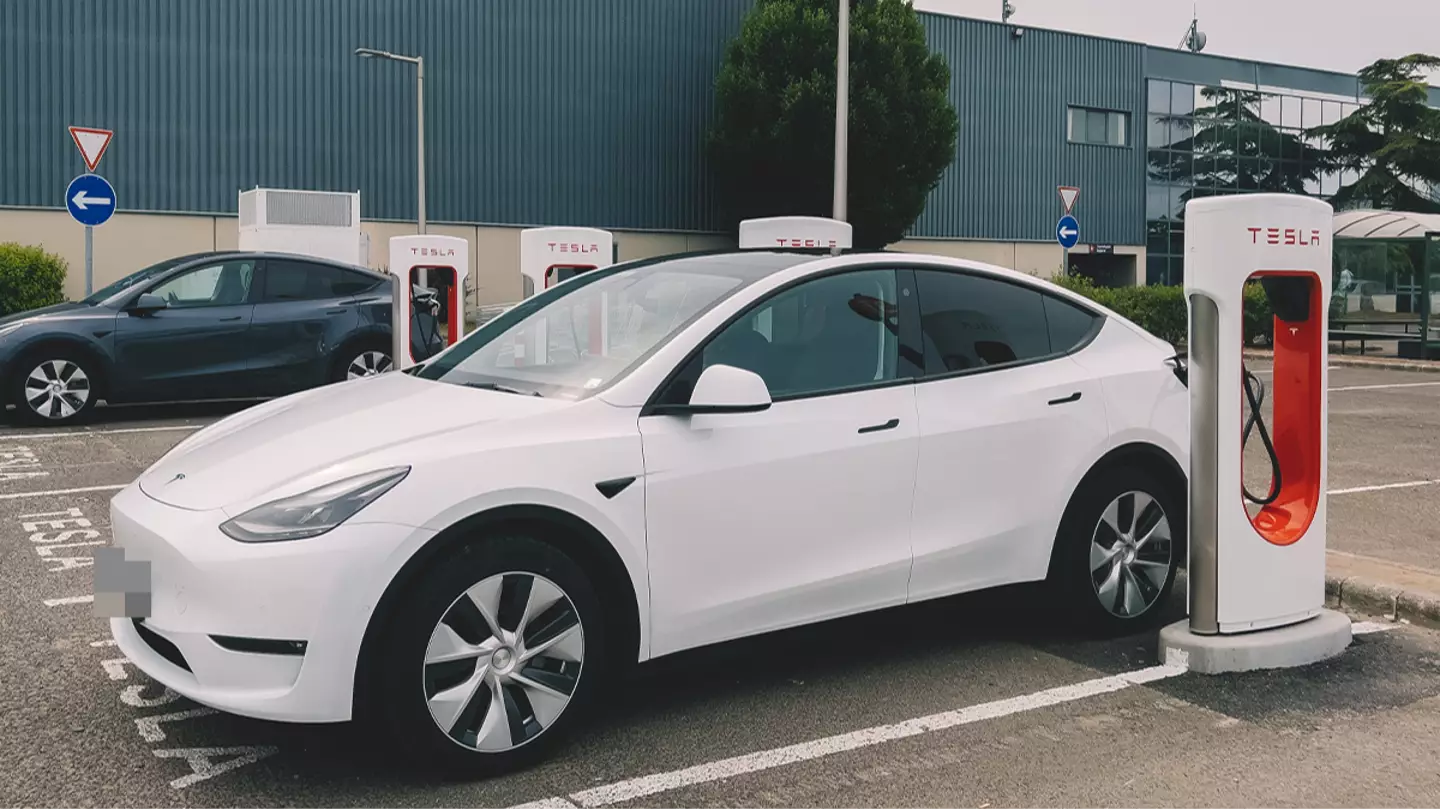A man who has driven his 2022 Tesla for 300,000 miles has revealed the impact it had on his car’s battery.
Jason McKnight, the owner of a Tesla Model Y EV, shared his experience on the Tesla High Mileage Club Facebook group, discussing how extensive driving affected his vehicle’s battery.
Battery degradation is a significant concern for Electric Vehicle (EV) owners as it determines how long a battery can efficiently function and when it may need replacement.
Degradation refers to the natural decline in a battery’s ability to hold a charge over time.
Similar to an aging phone, a battery requires more frequent charging as its ability to hold power diminishes.
Increased use and frequent charges to full capacity can accelerate this process.

McKnight’s experience offers insight into how extensive mileage affects a Tesla’s battery.
His car’s odometer reflects an impressive 300,000 miles in just three years.
He clarified that the battery in his vehicle is the original and has not been replaced, though it has experienced some wear.
McKnight estimates the battery’s degradation at about 21 percent, which is relatively low considering the mileage.
Tesla’s latest Impact Report indicates that battery degradation in the Model S and Model X is about 12 percent after 200,000 miles.
According to Vev, a company in the energy sector owned by Vitol, this is an impressive achievement.
Their website mentions that ‘larger batteries degrade more slowly, fleet operators that use trucks and buses have reason to be confident that EVs will be cost-efficient over the long-term’.
Additionally, the website states that Tesla’s batteries are expected to last between ten to 15 years, highlighting their durability.
However, reaching 100 percent degradation does not necessarily mean a battery replacement is needed.

In reality, a battery should be replaced when degradation reaches around 70 percent.
Based on McKnight’s experience, a car could potentially travel about 950,000 miles before reaching the end of its battery life.
This longevity is impressive for those who often spend significant amounts on regular car repairs.
Online users were amazed by McKnight’s calculations and his extensive driving habits.
One commenter remarked: “Wow, and I’m here with 120,000mi on my X thinking I’m running high mileage. It’s just a baby after all.”
Another user congratulated him on joining the ‘300,000 mile club,’ suggesting they might also be part of it.
If McKnight continues to drive 100,000 miles annually, he may have another six years before needing to replace his battery, which factors into the overall cost-effectiveness of his investment.

